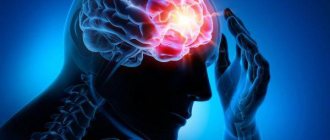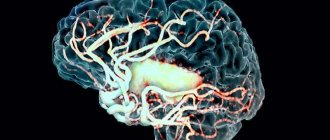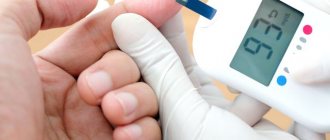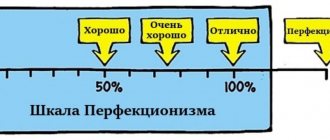What is transient personality disorder? A person “owes” all borderline mental states to the rhythm of modern life, especially in megacities.
In our age of speed and high technology, a person is subjected to severe stress due to the continuous impact on his body of various factors that radically change the psyche and lifestyle.
Quite often, people experience mixed mental states, which are usually diagnosed as transient personality disorders.
A number of factors that give rise to fears and phobias lead to an unstable state of mind.
Factors predisposing to the development of personality disorders
The increased risk of transient personality disorder is due to a number of factors, including social ones. Thus, among representatives of the poorest segments of the population, mental illness is much more common than among people with greater incomes.
In such an environment, all mental illnesses are more common, not only transient personality disorder, but also more severe psychiatric illnesses such as schizophrenia. As is the case with many diseases, a certain hereditary predisposition can be traced, but the specific gene responsible for the possibility of developing such disorders has not yet been identified.
People who were physically or sexually abused as children are also more likely to develop transient psychotic disorder. Various traumatic situations, such as serious losses, a problematic divorce, or the sudden death of a loved one, can also serve as fertile ground for the emergence of a transient personality disorder.
If the same traumatic situation that occurred in childhood is repeated in adulthood, it greatly increases the likelihood of developing mental disorders.
Causes
There are many causes for a personality disorder, including genetic predisposition, brain injury, or difficult life situations. There are cases when a personality disorder is directly dependent on childhood traumas experienced, such as the loss of a parent, special punishment, or alcohol or drug addiction of a family member. Men are most predisposed to transient personality disorder; the disorder can be triggered by:
- Chemical dependency;
- State of depression and apathy;
- Developed or emerging schizophrenia;
- Suicidal tendencies;
- Obsessive-compulsive disorders.
Classification of disorders, types of transient personality disorder
This disorder differs from other psychoses and schizophrenia primarily in its short duration. This trait also distinguishes transient personality disorder from simple personality disorder. In the latter case, the disorder is closer to an accentuation of character, is permanent, not transient, and requires, first of all, psychotherapy rather than drug treatment.
The international classification of diseases distinguishes several categories for such mental disorders:
- An acute variant of a psychotic disorder of a polymorphic nature without manifestations of schizophrenia.
- Polymorphic variant of the acute course of psychotic personality disorder with symptoms of schizophrenia.
- Acute course of schizophrenia-like disorder.
- Other disorders, mainly delusional.
- Other psychotic disorders, acute and also transient.
- Unspecified variants of such mental disorders.
Forms and symptoms
Pathological intoxication is classified into several forms. Psychiatry distinguishes two main types of this disorder: epileptoid and paranoid. Some psychiatrists, mainly forensic experts, identify another type called alcoholic catatonia.
In psychiatric practice, this is the name for motor agitation, a psychotic syndrome manifested in repetitive movements or actions. In this state, a person seems to be stuck in some moment: he constantly repeats a word or phrase, makes a gesture or movement, without reacting to external stimuli. He does not make contact, sometimes he deliberately ignores requests or takes actions that are the opposite of what is required of him.
The epileptoid form of pathological intoxication is characterized by severe disorientation and strong motor agitation. An affect of negative emotion arises: anger, fear. The person suddenly falls into a violent state and demonstrates aggressive behavior.
Movements are automatic or stereotyped, while chaotic, inconsistent and meaningless. Actions are accompanied by extraordinary malice and cruelty.
When in such a state, incredibly cruel murders and infliction of grievous injuries are committed.
The behavior of a person who has fallen into a pathological state is in no way dictated by the actions of others, provocations, or the environment.
The patient attacks most often silently or muttering incomprehensible phrases. The person is completely unaware of the actions he is performing and is unable to critically evaluate his behavior.
It also ends suddenly: activity drops sharply, adynamia sets in, and then the drunk falls asleep. Upon awakening, there is a complete absence of memories.
The paranoid form of pathological intoxication is characterized by delusions and hallucinations. The patient experiences motor agitation and loses the sense of reality.
Hallucinations are threatening in nature, the person is in a state of affect of fear or rage. He takes complex actions that seem meaningless, but within the framework of delirium they are completely logical.
Depending on the content of the hallucinations, the patient attacks imaginary opponents, screams to intimidate them, or defends himself and hides. He shouts out individual words or phrases that are imperative in nature, but does not react to response speech and actions or perceives them distortedly. After a short time, the person falls into a deep sleep, after which memories of the episode of pathological intoxication are absent or retained in short fragments.
Transient personality disorder - possible manifestations of this condition
The clinical manifestations of this disorder are very similar to the onset of schizophrenia, and the final diagnosis becomes possible only after a certain time, since transient psychotic disorder is a short-term and reversible disorder.
Whereas schizophrenia is characterized by faster or slower progression and a much longer duration of episodes of deterioration.
Manifestations of this condition may be:
- Rave. Delusions of persecution are especially common, and somewhat less common are grandiosity and depressive variants.
- Hallucinations (not long-lasting, since the long-lasting version is characteristic primarily of schizophrenia).
- Disorientation of orientation in space and time is possible, up to complete loss of such orientation.
- There may be a decrease in criticism and affective reactions.
- Thinking disorders can manifest themselves as primitiveness and superficiality of judgment, excessive speed of decision-making, and often a lack of consistency of thinking.
- Dissipation of attention and false recognitions also occur.
As a rule, there is only one symptom, not several. Combinations of pathological manifestations are observed relatively rarely and are more characteristic of other, more severe mental disorders.
TIA in the carotid region
Symptoms that develop with ischemia of the bloodstream of the carotid system :
- reversible weakening of the muscles on one side of the body, while maintaining full functions of the other side;
- partial loss of muscle strength in one limb;
- decreased superficial sensation in one arm or leg;
- impairment of articulate speech while maintaining the ability to pronounce individual sounds and fully understand the statements of other people;
- temporary blindness in one eye, accompanied by hemiplegia on the opposite side.
Features of differential diagnosis of such disorders
It is often possible to distinguish transient personality disorder from other mental disorders only after a certain time has passed. An underlying disease with similar symptoms (schizophrenia, schizoaffective disorder) can be finally excluded only after observing the patient for about six months.
A similar diagnosis can be made if:
- The onset was acute, with hallucinations, delusions, and lack of coherent speech, both individually and as a combination of these manifestations.
- Problems with attention, the presence of false recognitions, or attention disorders, if the examination does not reveal organic lesions of the nervous system that can lead to such manifestations.
- The appearance of such manifestations does not correspond to an episode of depression, manic syndrome, or major depressive disorder.
- The appearance of signs of a mental disorder was not provoked by the use of psychoactive substances or intoxication.
- Additional examinations did not reveal metabolic disorders that could affect the central nervous system, as well as any organic lesions of the brain.
In this case, an important point is ultrasound examination of the vessels of the neck (including in Doppler mode), which makes it possible to exclude the possible influence of atherosclerosis.
Neuroimaging methods are of great value in the differential diagnosis of transient personality disorders from various mental disorders against the background of organic pathology. Magnetic resonance imaging is considered one of the methods with the greatest diagnostic value.
Treatment methods
The TIA treatment program is focused on eliminating the ischemia process, maximizing the rapid restoration of full cerebral blood supply, and restoring normal metabolism in the affected area of the cranial space. In domestic medicine, as a rule, treatment of TIA is carried out in outpatient departments. However, many neurologists indicate the need for hospitalization of patients with this type of stroke due to the high risk of developing ischemic strokes in the near future.
The primary treatment measure is restoration of normal blood circulation. Most often, antithrombotic and antiaggregation agents are used for these purposes. If the TIA is caused by thromboembolism, it is advisable to use anticoagulants. To improve blood fluidity and reduce the aggregation of formed elements, a hemodilution procedure is performed - controlled dilution of circulating blood with blood substitutes.
The most important aspect in the treatment of TIA is normalization of blood pressure . If hypertension is detected, the patient is prescribed antihypertensive drugs. In case of disturbances of cerebral blood supply, it is advisable to use cerebrovascular agents. To prevent the death of nerve cells, powerful neuroprotectors and metabolites are used that have nootropic, psychostimulating, neuroprotective, antioxidant and antihypoxic effects. If necessary, carry out symptomatic therapy.











